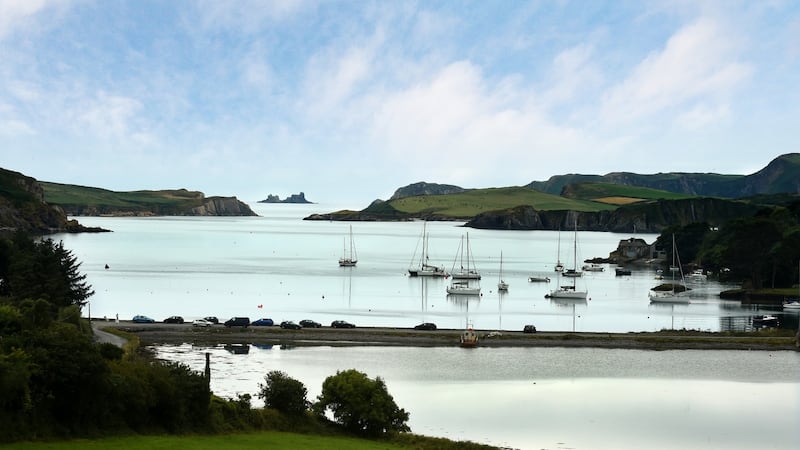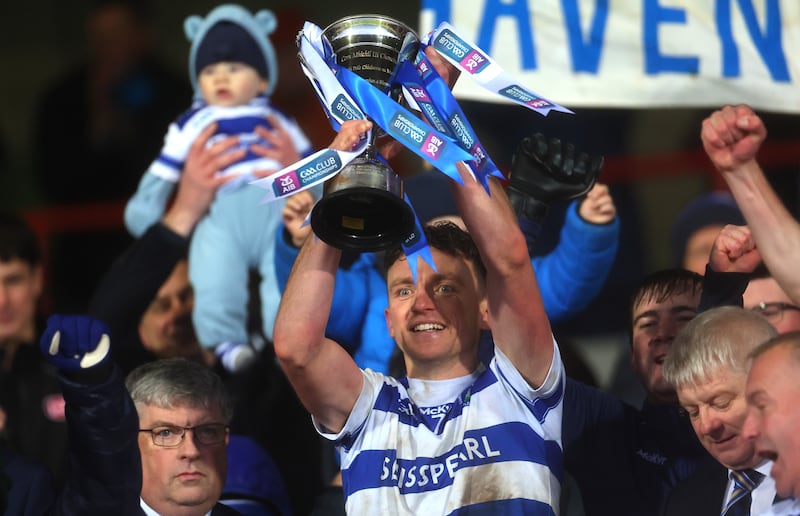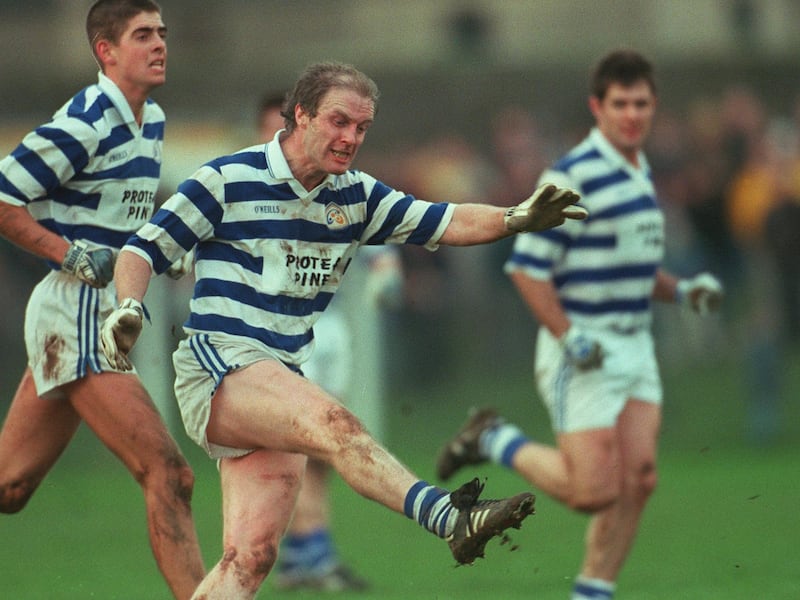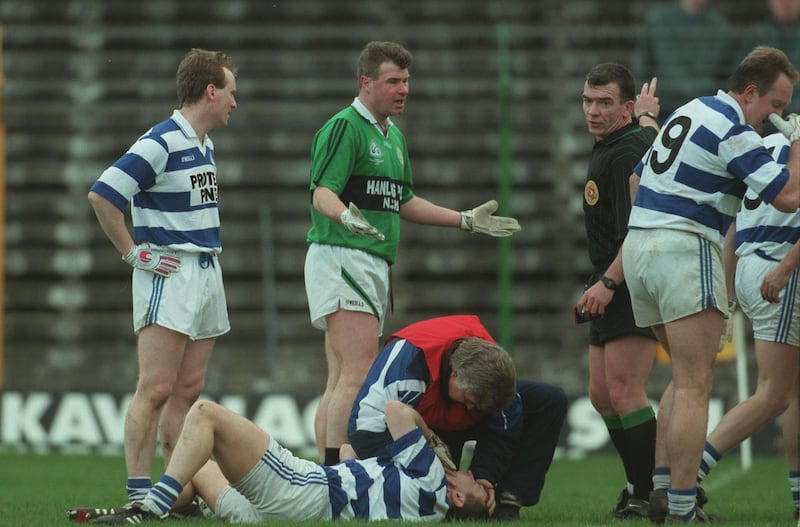More than 30 years ago Eamon Dunphy decamped to Castletownshend with the good intention of writing a book. He rented a handsome house called The Mall, at the bottom of the village, near the water.
Dunphy had no connection to the place, but he had visited it once and was struck immediately by its beauty. It stayed in his mind, he says, as somewhere “you could get real solitude”.
That was a fine notion but cutting himself off from the world ran contrary to Dunphy’s nature and after a while he went in search of company. One Tuesday night he walked up the hill to Collins’ pub, ordered a beer and sat at the bar, an extraterrestrial gatecrashing their small planet.
“After about 15 minutes a fella stood up at the back of the bar and said, ‘Eamon, is that you boy?’ I said, ‘yes.’ And he said, ‘Have you got a f**king song?’ I said, ‘yeah’ – and Jesus, this is pressure now. I sat on my stool and sang Raglan Road [laughs] and I was immediately accepted into the community.”
READ MORE
On the night of Castlehaven matches, Collins’ pub played host to whatever feelings were hot. On good nights, there would be a blazing singsong and Dunphy was soon inducted onto the roll-call of singers.
When he arrived in the village he knew nothing about the club. His understanding of the GAA’s power in rural Ireland was on a par with common knowledge. Being surrounded by it, though, feeling the pulse of it, was alien to his experience.
“What I saw was the depth and range of the GAA’s reach, and the effect it has on a place. It was central to everyone’s existence. What it meant to that community was extraordinary.”
The pub that became Dunphy’s local was run by Christy Collins and his wife Mary. Christy was a boy when the club was founded in the 1960s. Between the coastal villages of Castletownshend, Union Hall and Tragumna it was decided that there were enough players to make a team.
When Castlehaven won the West Cork Junior B championship in 1969 Christy played centrefield; he was the same age as the darts prodigy Luke Littler. The world at his feet.

“We started from scratch,” says Christy. “We had nothing. Our pitches were farmer’s fields. We used have to switch from farmer to farmer. If the farmer decided to put out fertiliser in the morning you had to switch. Although I remember one morning there was farmyard manure put out on a field and we had a match against Drimoleague. A big crowd was called to the field to get the manure off the pitch. If you know anything about farming, that wasn’t an easy job.”
And did ye put it back afterwards Christy?
“Not at all. Sure, people were very easy-going that time.”
Just 10 years later Castlehaven contested their first senior county final. Along the way they beat Nemo Rangers, who were All-Ireland champions at the time. It was an astonishing climb that everyone assumed would reach a precipitous fall. They never looked down. Ten years after that they won their first title.
The challenge was to keep the wheels turning. There wasn’t enough work to keep everyone at home, even if everyone wanted to stay. Two of Christy’s brothers, Anthony and Vincent, emigrated to America in the 1980s and used to come home to play championship matches in the summer. That went on for years.
Others only went as far as Cork city, 50 miles away, but that was far enough for them to turn their backs if they so wished. Two of Christy’s other brothers, Francis and Donal, played hurling for Blackrock in the city along with Niall Cahalane; Francis hurled for Cork too. Their feelings for Castlehaven, though, were uncompromised. Absence brought them closer.
The club depended on the devotion of players who had moved away, and in time they depended on the sons of the diaspora and their inherited feelings. In the normal course of GAA lives, kids end up playing where they grow up, regardless of their parents’ roots. With Castlehaven, that dynamic was turned on its head.
“A huge thing for us was that the players that moved away brought their sons back to play with us,” says Christy. “That kept Castlehaven where we are. There’s a fierce attachment. For anybody that ever played for Castlehaven, there’s a fierce bond.”
Mark Collins – Francis’ son and Christy’s nephew – is captain of the team this year. Having grown up in Douglas on the southside of Cork city, he was 15 when he first played for Castlehaven. Christy had taken over the U-16s and the minors in the motherland and they were struggling for numbers.
“When I was younger,” says Mark, “I was obsessed with Castlehaven. When I was small I used to go to all the games with my father. Everything revolved around Castlehaven for me. It was tough to transfer because obviously you had your friends and stuff. But playing the hurling made it a small bit easier – I wasn’t completely leaving Douglas.”
There is a cute yarn that tells the story in a preposterous circle. For the 1994 county final, the Castlehaven team mascots were Mark Collins, Damien Cahalane and Shane Nolan, none of whom were born in Castlehaven, or had ever lived there. Shane’s father, Jim, was the manager of the team and Damien’s father, Niall, was still playing.

Eighteen years later, in 2012, Castlehaven won the county final with a desperate late goal: Cahalane fed the ball to Collins, his shot for a point dropped short, and Nolan got a fist to it before the advancing keeper. They had been rescued by the three second generation mascots.
The cycle continues. The Maguire brothers grew up in Ballinspittle, more than 30 miles away. The Hurley brothers live in the city now. On training nights, says Mark Collins, about 15 or 16 players will gather at a pub on the outskirts of the city and head off in a convoy of cars. In teatime traffic the road trip will take 1½ hours; coming home they can shave 20 minutes off the journey. Whatever way they dice it, they will spend more time in the car than on the pitch.
“It’s 50 miles down from Cork,” says Jim Nolan. “I used to do it in my own time. It’s tough going. The roads are probably better now, but they’re busier. I’m out of there since about 1982, but I’m down there a lot. The lads that live in Cork or anywhere else are more Castlehaven than the Castlehaven people themselves. You know, they die for the place.”
Larry Tompkins’ relationship with the club had different origins, but ultimately it was founded on the same feelings. In the mid-1980s, around the time that Tompkins had an irreconcilable falling out with the Kildare County Board, he was playing football in New York with Vincent and Anthony Collins.
Tompkins used to train with radioactive intensity, and in New York there were very few footballers who were minded to join him. Among his unflinching companions, though, were four Castlehaven lads. Anthony and Vincent planted the seed in Tompkins’ mind that he should throw his lot in with their crowd back home; they watered it carefully until the proposition flowered. For his fanaticism Castlehaven was a soul mate.
“I saw how much they loved the game and that suited me because I was mad in relation to the game as well,” Tompkins told the Southern Star before Christmas. “When I went to ‘Haven it was a match made in heaven because I was with people like myself.”

“It’s just a bit different,” says Mark Collins.
“The big thing I see is the happiness it brings to people. It’s nearly like a drug. You’d be talking to people who have no involvement with the team, or have no family member involved and, like, the enjoyment and the happiness it brings. Down there it’s a real religion.”
Tompkins was coming towards the end of his Castlehaven career the last time they contested an All-Ireland semi-final, 26 years ago. Christy Collins was the manager; Jim Nolan was one of his selectors. Niall Cahalane was sitting in the stand, serving a 48-week ban for jostling a referee in the county final. Two other Castlehaven players were suspended too. And still, they should have buried Erin’s Isle, the Dublin champions.
Castlehaven led by seven points at half-time, and were still six points clear with 59 minutes on the clock. But in the time that remained Erin’s Isle scored 2-1, including a goal that seemed to defy the laws of physics. Niall Crossan’s shot hit the near post and cannoned back into play off the far post. The umpires concluded, though, that the ball had staggered like a drunk and crossed the line.
In the days that followed, Castlehaven sent footage of the goal to Sky Sports, hoping that their advanced technology might bring them salvation. They couldn’t resolve it. There was no footage from behind the goal, there was no white chalk to denote the goal line, and at a critical moment in the only available footage the ball was obscured behind a player. In his match report the referee, Pat McEnaney, stood over his on-field decision.
More than 20 years later, the game reappeared in the Toughest Rivalry series, re-enacted as a harmless confection. Harry Redknapp was parachuted in to manage Castlehaven and Gianluca Vialli managed Erin’s Isle, two grizzled football managers who were sure they’d seen everything.

The staged rematch was played in Castlehaven, on the same day they opened a new gym, a new all-weather pitch, a new meeting room and a dressingroom extension. If the original match was still a pebble in their shoe, they had learned to walk with it.
“The thing about it,” says Nolan, “is that I’d say it was one of our best performances ever. We scored 17 points. Off the top of my head it was 2-12 to 0-17 [correct]. That’s the cruelty of sport. I remember a lot of the lads who are playing now crying after that match as young fellas.”
Of the four teams left in the club championship, Castlehaven have a different profile to the others. They don’t have the catchment area of Kilmacud Crokes on Dublin’s southside or St Brigid’s outside Athlone; they don’t have a high-profile outside manager like Glen. The people of the parish are invested in the club, just as they are in many places, but Castlehaven’s resources are modest. The population of their hinterland is less than 1,200 people. They look after themselves.
“We never had an outside manager,” says Christy Collins. “We maybe had outside people involved but it never cost us anything. We never paid anyone to train the team and that’s important as well.”
Gavin Gallagher, one of their coaches and selectors this year, is from Donegal. His wife’s family had a house in Castletownshend, and having tired of working in London they landed in West Cork. Gallagher made himself known.
“He went up to the shop one day,” says Mark Collins, “and said he’d love to get involved in a team. He’s been absolutely brilliant. He’s doing a lot of the coaching and he’s been a huge addition to us. It’s always kind of like that. You’d have home-based fellas and then you’d get help from somewhere.”
Christy Collins says that people will be flying in from everywhere for the match on Sunday. His brothers, Anthony and Vincent, will come from New York, faithfully. At least one of them has been at every match since the county quarter-final, four months ago. Forty years of over-and-back.
Dunphy has been following their progress from a distance. He stayed in Castletownshend for two years. His partner, Jane Grogan, and her daughter, Rosie, joined him for the second year and he remembers it now “as one of the happiest times in my life. It was heavenly”. Before they left they threw a house party that, he says, “lasted for two days”.
He didn’t finish the book. Not then. Another time.
- Sign up for push alerts and have the best news, analysis and comment delivered directly to your phone
- Find The Irish Times on WhatsApp and stay up to date
- Our In The News podcast is now published daily – Find the latest episode here
















